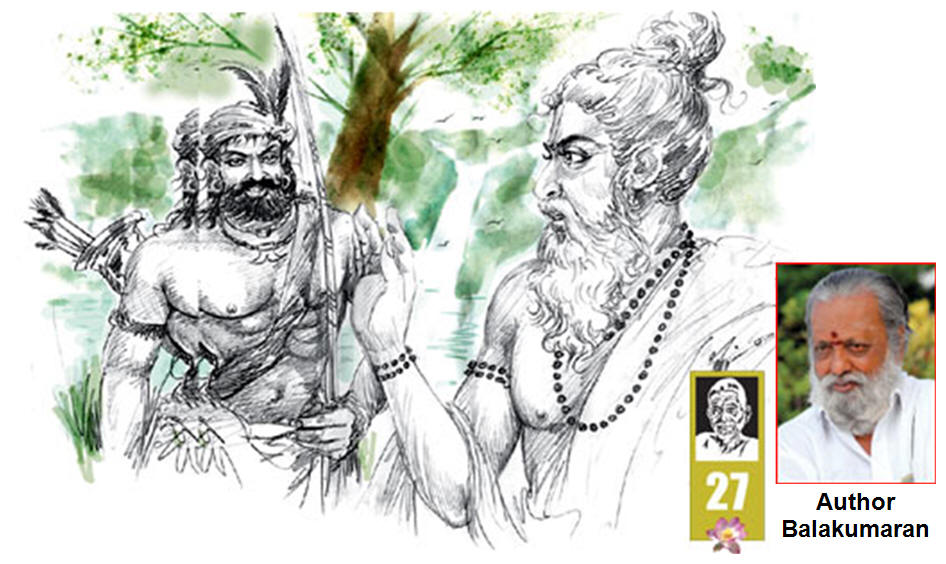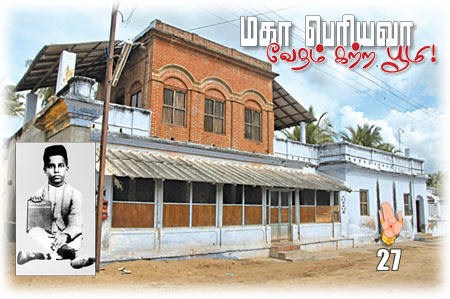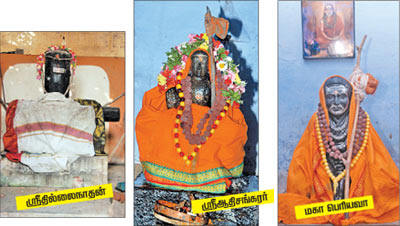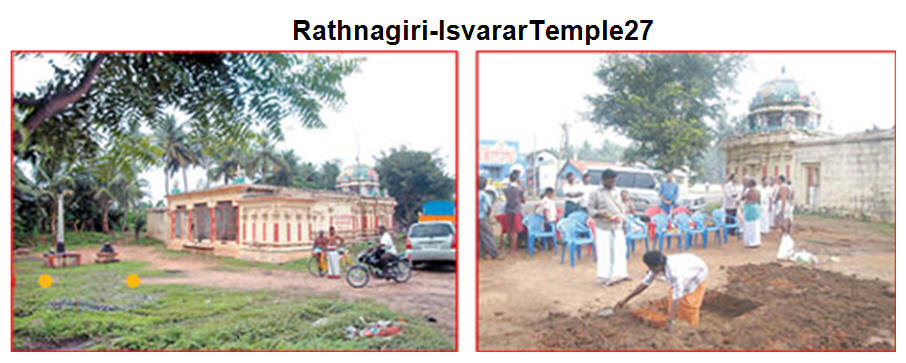27Ramanamaharishi20110419.html
Sakthi Vikatan 19 Apr, 2011
Ramanamaharishi. Ramana Lotus
நயனதீட்சை nayaṉa-tīṭcai.
, n. < nayanadīkṣā. (Šaiva.) A mode of religious
initiation in which a Guru imparts spiritual knowledge to his disciple
by dispelling the āṇavamalam with his look of grace, one of
seven tīṭcai,
Kāviya Kāṇḍa Gaṇapathy was affectionately called Nāyaṉā (Father).
The great effervescent Sakthi from inside of Bhagavan was transferred in
eyes to eyes fashion directly (indicating
Initiation by look of grace)
to the inside of Ganapathy. It did not stop there. He clarified
accurately on what to do in two easy sentences.
If you pay attention to where ‘I - I’ originates, the mind will lyse
(lysis = dissolution) with the source. That is Tapas-austerity.
Līṉam in Tamil and Sanskrit (Laya) means dissolving or lysis.
Dissolution is disappearance (like the salt in water). That sentence,
intonated in a deep and soft voice, SriRamana Maharishi formulated for
the benefit of Sastri with clarity, accuracy and purpose.
He again reiterated what Tapas means. In performing Mantra Japam,
concentration on its origin makes the mind lyse in the source. That is
Tapas.
Here the substance is not in the Mantra. It is not in the sentence.
When the sentence is spoken, pay
attention to what the mind does. As
the sentence is spoken and if the mind wanders in all directions, there
is no stillness of the mind and no meaning to the sentence.
The devotee-hunter asked, “What Mantra should I chant?”
The Muni did not know what to
say. He looked at the tree nearby (he used it as the basis for Mantra).
He taught the hunter, “Say ‘Marā,
Marā.
Marā.’”
He repeated it. In Tamil
மரம்
or Maram means tree. But Marā carries no meaning. But it created a great
change in his heart, mind and soul. Looking at the word intently,
reaching the mind through the word, and looking at the mind intently, a
huge artifice, whereby the mind got lost, happened in that instant. The
mind dissolves, says Bhagavan. Slowly the mind becomes subdued, tranquil
and still and later it dissolves and disappears.
What are the prerequisites for this spiritual endeavour and later
enlightenment? Humility is the
first on the list. Complete trust in Guru is necessary.
Bhagavan Yogi Ramsurathkumar asked Pappā
Ramadass, “What should I do?” Ramadass replied, “Chant without
interruption for four hours Rāma
Nāmam.”
He chanted and his mind was immersed in the Japam so much so the mind
vanished. The householder Ramsurathkumar attained the lofty position of
a Yogi. Bhagavan narrated the
above episode.
Forget about and give up Pujas, supplication, Japa, Tapas, breath
control, Yoga Nishtai (meditation), Homam (Fire Sacrifice), Yāgam…
When the mind holds fast on the Mantra, you can discover where the
I-thought comes from and thereafter become one with it. Therein the mind
subsides, dissolves and disappears. This facility (ability) comes with
time.
One push. You fall in and become one with the soul. Stay there. Life’s
pleasures will not let you go there. In the back of the mind, the
tendency to enjoy the worldly pleasures remain. If Japam is performed,
what are the benefits? You can become a famous Swamy. You can buy many
acres of land. You can build many buildings. You can attract people from
all over the world. You can claim victory in debates. By becoming
one-pointed and become a Siddha, you can cure many diseases. Or you can
pretend to cure diseases by Siddhi. You can collect money. If two people
declare that their stomach pains were cured, 100 people will hear it.
Two thousand people will seek
you. Then you buy lands all over the world. This is the dance of the
devil. It is the quality of the devil. It will destroy itself in the web
of Māyā.
What will happen to the mature mind that dissolved and disappeared?
It will be in a state of
perplexity. One meal to eat,
some water to drink, a loin cloth to wear, hard floor to sleep on… are
enough for the mind to stay still. (Now the follow-up.) But, riches seek
his feet. Services (people) will wait in line to serve. The Jñāni has no
interest in them. The wealth is near him but it won’t be of any use to
him. He will have buildings nearby, which will be of no use to him.
Having lands and buildings or
not do not matter to him. He always receives begged food on his palm,
mashes it up and eats. If a supplicant offers a date (fleshy fruit), the
Jñāni will accept it and eat it. He eats it for the pleasure of the
donor and not for his own eating pleasure. His mind and senses are
satisfied with a mouthful of food every day. (He needs just a bolus of
rice to
sustain life.) That is true control of the senses.
(He is not an epicure.) That is the
attribute of a Jñāni.
Bhagavan SriRamana Maharishi’s life is not full of events. It is not a
jam-packed schedule. But, It is not a mere schedule of events. We must
delve into the events and understand what his life tells us.
The subtle fragrance and nature
of his life should pervade us. We should think deeply into his Tapas. We
should ask him what austerity (Tapas) is. We should try to practice that
Tapas. Bhagavan SriRamanar’s life’s story is unlike reading and
finishing a novel. It should enter your soul and change your Buddhi.
Your thought should show reformation and growth.
Sanatana Dharma, the Hindu code of ethics, is not an ordinary matter.
To make the mind one-pointed, at
various ages and stages, many Jñānis employed multiple modalities of
intuition to move towards that objective.
Bhajans, devotion, festivals,
idol worship, narrations of Itihāsas and Puranas, Veda recitations, Fire
sacrifices… have the main purpose to make our mind one-pointed, mature
and devoted.
The transformation of soul over many births.
You wore multiple styles of silk
saris. Did you reach a state of sufficiency and satisfaction? How could
you say it? That state will never be reached. I have only four silk
saris. How could they be enough? That is your predicament.
Don’t worry.
In the next birth, a sense of
sufficiency (indifference) will take hold of you.
Sanatana Dharma states that your
Tapas does not stop with this birth. This story of life is a matter of
continuation into Jenma after Jenma (birth after birth).

When you stand in the Ramanasramam with opposed palms, with no external
stimulus or help, your heart, mind and soul (உள்ளம்
= Uḷḷam
= Inside = soul)
should soften and melt with the flow of spontaneous tears. I am alone:
No relatives, no friends, no companion, no guide and none whatsoever.
The Parabrahmam alone inside me is my guide, my companion… That is me; I
am That: with that stance, merge. You must be immersed in ecstatic
tears. You must sit down in limitless peace. Instructions do not bring
changes. Jñāṉis bring about changes. Jñāṉis are not corporeal beings (in
the ordinary sense of the word). When
they were corporeal, they transcended the body, saw the wonderful form
in their soul and became it. Death is not their lot. They live a
deathless life. They are omnipresent. They are of the form of
effulgence. Don’t think of a light in a lamp.
Thought of him gives us
effulgence. Thought of him is the guide. That state is our light. It
dissipates darkness with that light showing us the way. We should follow
that path. Guru means the remover of darkness.
Ganapathy Muni is a poet extraordinaire.
Because Ganapathi held the feet of SriRamana Maharishi, he saw changes
in his heart, mind and soul (Uḷḷam).
He did not know Saiva Siddhāntam. In Tiruvannamalai, the members of
Saiva Siddhant Society invited him to talk on that subject. He accepted
the invitation. He told Srīramaṇar he was not learned in Saiva
Siddhānta. Bhagavan gave the book ‘Siva Jñāṉa
Bōtham,’
made him read the verses and explained the verses. Ganapathy with sharp
intellect and broad education understood Saiva Siddhāntam. He explained
Saiva Siddhāntam from the dais transcending his own understanding and
received accolades and applause.
He realized his effort did not get him through the talk. Forgetting
oneself and immersing oneself deeply, there is a chance for difficulties
to arise. The body freezes. Difficulties arise. When the mind stands
still, it affects breath and blood flow. The breath becomes rapid with
anger, passion, irritation, disgust, lamentation… Silence makes the
breath slow. The
breath runs like a fine thread. In the lungs, there is diminished
excursion (of air). The blood flow is sluggish, resulting in stagnation
of blood coming down and causing congestion and headache.
Those who know that body and mind are different, understand these
observations. The neophytes are beside themselves and helpless, when
they cannot tolerate this pain. When Ganapathy Muni had this congestion
at the height of his Tapas, he did not know what to do and sent a
devotee to Maharishi with a note of his pain.
Maharishi immediately left for the Ganapathi’s place, put his right hand
on the crown of his head and applied pressure. Ganapathi’s pain
dissipated from inside him. The flow channels came back to normal. The
breath became regular. The distressed body became erect. Darkness left
and the face blossomed. What Ganapathy had, was a setback. This is an
impediment, when one goes fast. When an experienced one sends his mind
to the soul, it becomes proper and optimal.
There is too much motion (stress) when the mind is sent to the soul
(subsides in the soul). The Muni
came back to his normal self. When
Maharishi was talking, he said in a soft voice, “Ganapathy addressed me
with his problem. To whom am I going to appeal?
Bhagavan SriRamaṇa Maharishi is a self-ignited flame. He was his own
Guru and a pinnacle of virtue. He himself effervesced, subsided,
self-supported and blossomed as the lotus flower. Bhagavān SriRamana
Maharishi is an Avatara.
Let us get Darśan.
Kanchi Mahan: The deity of Mercy
Mahāperiyava at the time of ascending the papal chair, was 13.
Every day there was an increase
of people visiting him at Kumbhakoṇam Mutt. Therefore, there was little
time for him to learn Vedas. The Mutt officials were trying to find a
solution for this and made up their mind to relocate him in Mahendra Maṅgalam
village on the north banks of River Kāveri.
That village was prosperous in the 10th Century. This village
was a gift to the Brahmins from Pallava king Mahendra Varman. Rock
carvings prove such a deed. They discovered the Siva Temple here was
huge when they dug. Siva’s name here is Thillaināthan. The rock
engravings show that the king gave the temple as a gift to Siva. The
nearby village Srīnivāsanallūr has a temple. The two temples were built
in Chola style.
Mahēndramaṅgalam was once a battle ground. Nagasamy the archeological
researcher said that the temple histories were written not in a prose
style but in a poetic form.
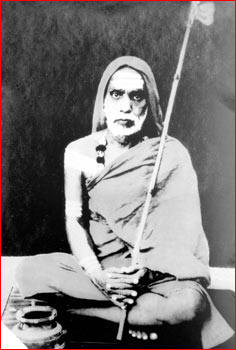 Periyava
learnt Vedas in the sacred city Mahēndramaṅgalam
from 1911 to 1914. When the students were paying homage to the teacher,
it turned out the teacher had to pay homage to a student. Reason: The
student was the Madāthipathi.
This school was run by Śrīraṅgam Kuvalakkudi Siṅgam
Iyengar. This building was for exclusive use of the Vedic School
according to the writ engraved by Iyengar in the building and registered
in the office of the registrar. His grandson and other family members
run the Vedic school. Periyava planted a Holy Basil plant and worshipped
it before school hours. To this day, the Tulsi plant is maintained.
Periyava
learnt Vedas in the sacred city Mahēndramaṅgalam
from 1911 to 1914. When the students were paying homage to the teacher,
it turned out the teacher had to pay homage to a student. Reason: The
student was the Madāthipathi.
This school was run by Śrīraṅgam Kuvalakkudi Siṅgam
Iyengar. This building was for exclusive use of the Vedic School
according to the writ engraved by Iyengar in the building and registered
in the office of the registrar. His grandson and other family members
run the Vedic school. Periyava planted a Holy Basil plant and worshipped
it before school hours. To this day, the Tulsi plant is maintained.
About 50 years ago, someone bought part of this land to make red bricks
in the kiln. Then only, the buried temple and its humongous size were
revealed. Nandi’s face was
slightly damaged. The Sivalinga and the Nandi were placed on the mound.
In the 1960s, Periyava visiting this place was unhappy to see Nandi and
Siva scorching and baking in the sun. He desired to have a small temple
at least to house the deities. In 2006, Sri Jayendrar came here and
built the temple near the Perumal Temple.

Whenever Periyava came here, he used to visit Srīrathnagirīsvarar
Temple. He went up the 1000 steps fast; it was a joy to see it.
Ādisankarā visited this place. Knowing this, Periyava installed an idol
of Ādisankarā in the Mandapam. Srījayēndrar installed an idol of
Periyava near Ādisankarā. Ramamurthy Gurukkal said, “The two get regular
puja here.” Nationalist Gandhipiththan opined, “If we build a temple to
SrīChandramaulīvarar-Srītripurasundari, we can move Periyava to the new
temple. He was supposed to have known Periyava.
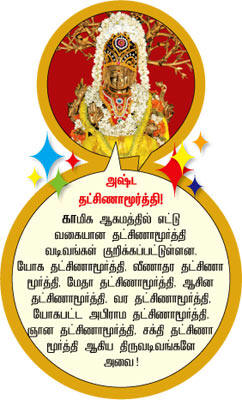 Srījayēndrar
asked Krishna Gāṉa
Sabhā
Administrator Prabhu, “Is it not possible to build a temple with
Sivalingam and Nandi as the resident deities, as desired by Periyava?”
Prabhu, taking up the challenge, is involved in the planning stages of
the said project. Last year,
the Bhūmi
Pūja
(Consecration of the building site) was conducted.
The local people came in throngs
showing a huge support.
Srījayēndrar
asked Krishna Gāṉa
Sabhā
Administrator Prabhu, “Is it not possible to build a temple with
Sivalingam and Nandi as the resident deities, as desired by Periyava?”
Prabhu, taking up the challenge, is involved in the planning stages of
the said project. Last year,
the Bhūmi
Pūja
(Consecration of the building site) was conducted.
The local people came in throngs
showing a huge support.
Swaminatha Sthapathi
who cast the Mahāperiyava’s holy statue undertook the temple service
(casting idols). Sthapathi was ecstatic to note, “When we opened the
eyes of Periyava statue (Infusion of life in the idol), I experienced a
thrill in my body. I now have the responsibility to build the temple.
That is my blessed luck.
Mūlavar (fixed deity), Ambal (Consort), Pañchaparivāram (five-member
Family of deities), Srī Gaṇapathy, Srīmurugaperumāṉ,
Srīsaṇḍikēsvarar…are the resident deities housed in the temple.
Jayaraman of Mahēndramaṅgalam said, “It is a great merit to see the Vedic school where Periyava was a student. It is boon for the townspeople to have the temple. His grandfather was Periyava’s contemporary and fellow student at the Vedic School.
It is certain that
Mahēndiramaṅgalam will shine as an auspicious temple town.
